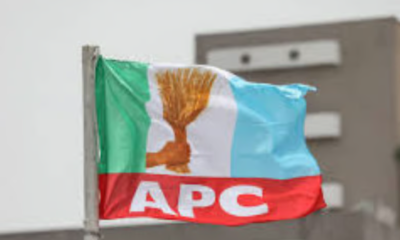By Odunewu Segun
The post-recession economic recovery achieved by Nigeria in the third and fourth quarters of 2017 has begun to decline gradually in the first quarter of 2018 when the GDP fell to 1.95% representing a quarter on quarter decline of 7.58%, pointing to a fragile economic growth for 2018.
Last year, Nigeria exited a crushing recession that had brought on millions of job losses, reduction in government revenue, depreciating exchange rate and widespread poverty.
Signs of an even stronger growth in the third quarter of the year were strong as limitations that stifled the forex market was partially lifted with investors showing renewed confidence in the economy.
The result was a real GDP growth rate of 1.17% at the end of the third quarter of the year, confirming Nigeria’s exit from recession. When the numbers rolled in, the underlying data that supported the growth recorded in the quarter were impressive.
The economy continued to improve throughout 2017 with the real GDP growth rising to 2.11% in the last quarter of the year and ending with an annual Real GDP growth of 0.82% in 2017. Since then, the momentum has been anything but strong.
But recent data released by the National Bureau of Statistics (NBS) for the second quarter of 2018 show that the Nigerian economy is still very fragile and is now falling from the post-recessional economic recovery it made, especially in the third and fourth quarters of 2017.
According to the data, the Oil sector posted a negative Real GDP growth for the first time since Q1 2017 (when the economy was still in recession) by posting a declined growth of -3.95% in Q2 2018 from 14.77% recorded in the previous quarter of Q1 2018.
The manufacturing sector’s real GDP also dropped to 0.68% in the second quarter of 2018 from 3.39% recorded in Q1 2018.
This shows that the manufacturing sector contracted by 2.17% on a quarter on quarter basis.
The decline in the exports and GDP of Manufacturing and Solid Minerals sectors is an ominous sign that the federal government’s diversification efforts are not yielding the needed results.
Agricultural real GDP growth declined to 1.19% (lower than that of recession period) to record its lowest growth in several years, while the finance and insurance sector’s real GDP also slumped to 1.28% from 13.0% in Q1 2018.
Capital imported into Nigeria fell from $6.3 billion in the first quarter of 2018 to stand at $5.5 billion in Q2 2018 showing a decline of 12.53% from the previous quarter.
Foreign portfolio investment declined to $4.12 billion in Q2 2018 from $4.57 billion in the first quarter of 2018.
Nigeria’s total export value contracted for the first time in about 10 years in Q2 2018. It declined by 4.9% from N4.70 trillion in Q1 2018 to stand at N4.46 trillion in the second quarter of 2018.
Solid mineral exports also fell by 25.98% quarter on quarter (N19.93 billion) from N26.92 billion in Q1 2018 while raw material exports declined by 2.98% in Q2 2018 to N31.72 billion.
Also Nigeria’s external reserves, having risen to a year high of $47.8 billion towards the end of June 2018, it has failed to hit the $48 billion mark since and instead dropped below $47 billion for the first time in 4 months, on August 6, 2018.
It has been dropping since then and currently stands at $45.47 billion as at September 6, 2018.
The Nigerian stock market has also recorded a string of losses in the last quarter, with low foreign investor participation seen as one of the reasons why.
Stocks have lost a whopping N3 trillion year to date and about N1 trillion this quarter alone (with one month to go).

 Football1 week ago
Football1 week ago
 Health & Fitness2 days ago
Health & Fitness2 days ago
 Featured5 days ago
Featured5 days ago
 Comments and Issues1 week ago
Comments and Issues1 week ago
 Education6 days ago
Education6 days ago
 Business6 days ago
Business6 days ago
 Business5 days ago
Business5 days ago
 Crime6 days ago
Crime6 days ago

